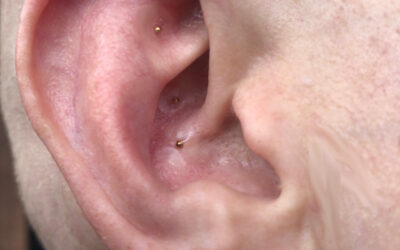Now that spring has sprung, with the warmer weather many are reinvigorating their exercise routines. For anyone noticing their range of motion limiting their activities, I’d like to address one of the most common complaints I hear in the treatment room: chronic low back pain.
It is not just in my clinic that low back pain is a prominent issue. It is estimated that up to 80% of the world’s population will suffer from back pain at some point in their lives, with the lower back being the most common location. Although most episodes last less than two weeks, research shows that recurrence rates for low back pain can reach as high as 50% in the first few months following an initial episode.1,2
Therefore it is of interest not only how to treat the pain, but how to prevent a recurrence. Paying careful attention to posture (especially while seated) and alignment when performing activities such as lifting is key.
The two tricks to know are 1) how to sit while maintaining the natural lumbar curve of the spine, and 2) how to ‘lift with your legs, not your back’ as if you are doing a deep squat when lifting something from ground level.
Furthermore, a study published in the Clinical Journal of Pain3 sheds light on how acupuncture is a safe and effective treatment for low back pain, maintaining positive outcomes for six months or longer without producing negative side effects that often accompany other treatment options. Study participants experienced improvements in not only pain intensity, but also intake of pain medication, sleep quality, and even activity level. The analysis revealed “significant” differences between acupuncture and placebo patients at one-, three- and six-month intervals following treatment, all of which showed acupuncture as a more effective form of pain relief. For example, in the acupuncture group, both morning and evening pain levels were lower than at the start of the study and continued to decrease for the duration. In the placebo group, however, pain levels were significantly higher after one month than they were at baseline, and continued to remain higher than the initially recorded level throughout the study.
Additionally, the researchers believe that based on previously published studies, acupuncture may be most effective for low back pain caused by an injury or disease outside the nervous system in origin. In other words, cases where an injury is not involved is when integrative medicine may be most useful as retraining body movements using physical therapy is very effective in treating nerve-related pain when used in conjunction with acupuncture.
The game plan:
1) In an initial examination, I assess whether the pain you are experiencing is due to a muscular injury or if there appears to be nerve involvement.
2) If there appears to be nerve involvement, acupuncture treatments may be scheduled in tandem with physical therapy sessions.
3) If you would rate your pain a 5 or above on a scale of 1-10 with 10 being the worst, treatment twice a week is advised to reduce the pain to a more manageable level within 1-2 weeks.
4) If the pain is already below a 5, or once the pain drops down below a 5, once a week should be enough to keep progressing and prevent any aggravation of symptoms. Depending on how long you have had the pain, it may take anywhere from a few to several sessions to resolve completely so that it does not recur.
[2] Nyiendo J, Haas M, Goodwin P. Patient characteristics, practice activities, and one-month outcomes for chronic, recurrent low-back pain treated by chiropractors and family medical physicians: a practice-based feasibility study. Journal of Manipulative and Physiological Therapeutics May 2000; 23(4):239-45.
[3] Carlsson C, Sj˜lund B. Acupuncture for chronic low back pain: a randomized placebo-controlled study with long-term follow-up. Clinical Journal of Pain 2001;17(4):296-305.




